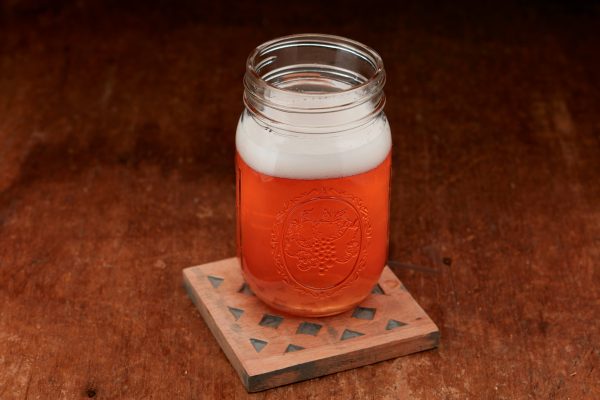
By Shawna Cormier
Getting better at brewing is a little bit of a double-edged sword. In the beginning, I didn’t dump any batches (and probably should have). But, the more I learned and my palate shifted, I began dumping almost everything.
I was—and still am—too hard on myself.
“OMG, it’s not attenuated enough.”
“OMG, it’s accidentally hazy.”
“OMG, I dropped my grain basket into crazy-hot wort, made a mess everywhere in my kitchen, and lost half my pre-boil volume.”
Breathe. It’s going to be okay. There’s a reason “Relax, don’t worry” starts the homebrewer mantra.
When to Dump a Batch?
The more you learn and evolve as a brewer, the better you determine whether you should or shouldn’t dump a batch. But, don’t worry: most of the time, your beer will be fine and worth seeing through to the end.
Beer can be like a romantic partner. Sometimes they need time, sometimes they’re great right away, sometimes you need to help them along, and sometimes, unfortunately, you do need to just dump them.
As a brewer, you want to nurture the beer and do everything possible to make it work. But, life almost always has different plans.
How Does It Taste?
The first thing to think about when the dump-it blues kick in: what beer did you want to brew? Does this beer taste the way you want it to? Or not, no problem! Assess what you’re tasting. Is it too sweet? Maybe it’s still fermenting. Too bitter? Listen, West Coast IPAs are coming back. Forget to hop your beer? Dry-hop it and see what new hype IPA you come up with.
Does This Look Infected?
Suppose your American Pale Ale develops a pellicle (that lovely slimy, bubbly film on top of funky beers). In that case, you might not want to keep it around. A pellicle can develop on beers fermented with Brettanomyces, Lactobacillus, and/or Pediococus, so if you didn’t intend for that type of fermentation, this is either a sign of infection or accidental genius. Infection can be buttery and vinegary—not something that’ll be tasty at any point.
There are rare times when a batch gets inadvertently hit with Brettanomyces (perhaps from using Brett-tainted equipment) and some bacteria, and it ends up being a happy accident. Taste it. Maybe you’ve discovered something unique!
Here’s when you should dump: If there’s mold growing on it and it smells gross. Open that fermenter. You’ll smell it, and your body will tell you, “no, thank you.” Take it as a learning experience.
Give It Time
Here’s when you should wait: when you taste your beer, and it has that “green” or “young” taste.
This could be a combination of a few things, including green-apple/acetaldehyde, diacetyl, or fermentation-derived sulfur. Some styles have a small amount of these elements, such as kellerbiers and helles. Congrats, you’ve brewed a good lager—drink up!
Now, when you still have these elements in a style that doesn’t have it baked into its style classification, you might want to ask yourself if it’s worth proceeding. For example, a high level of green apple, movie-theatre butter, and egg might not be what you want in your hazy IPA. But, if you give it more time, that could clear up and be a nonissue.
If you have a stuck fermentation or a fermentation that isn’t hitting the gravity you’re looking for (under-attenuation), raise that temperature in the fermenter or add additional yeast in a technique called krausening (adding yeast cells that are already in an intense wort work-out). Remember the accidental Brettanomyces exposure from before? That’s another way to unstuck a fermentation—try adding Brett!
Raising the temperature could also get rid of any buttery off-flavor. Yes, diacetyl can be acceptable at some levels for some styles. But a load of movie theatre popcorn isn’t the best look. No matter how many hops you might throw at it. Raise the temperature and avoid a sad trombone drain dump.
Create a Blend
If you’re trying your hand at a Wild Ale and it’s not quite what you want, there’s an argument for blending, but that gets pretty advanced. For example, let’s say your beer in question is abundantly sour. Do you have other beers chilling in secondary (or maybe a barrel?!) that you could eventually blend with? Hey, it’s a wild idea, but it might work. Pun intended.
Let’s say you accidentally drop an unsanitized spoon or your hydrometer into the chilled wort. Don’t fret. There’s a high chance it won’t infect the wort, and your clean beer will stay as such. Really we just want to give any beer the best chance to thrive and be the best it can be. Like a good parent! You set the kid up for success in all the ways you can, but sometimes you miss a step. That doesn’t mean your kid won’t be an award-winning scientist. So, let the beer ferment as normal. You’ll know if something goes wrong.
At the end of the (brew)day, beer is better than no beer. So give yourself a little grace. If you like it, drink it. They say a beautiful beer is in the eye of the beer-holder. And wow, now that I’m drinking it, this slightly under-attenuated IPA isn’t all that bad after all.
* * *
About the Author
Shawna Cormier American Homebrewers Association Governing Committee member and Seattle Beer School founder. Check out her favorite homebrew recipe below!






Share Post